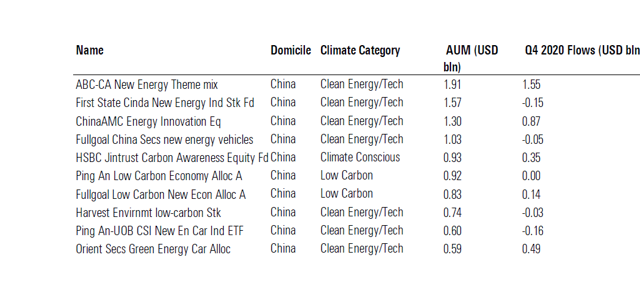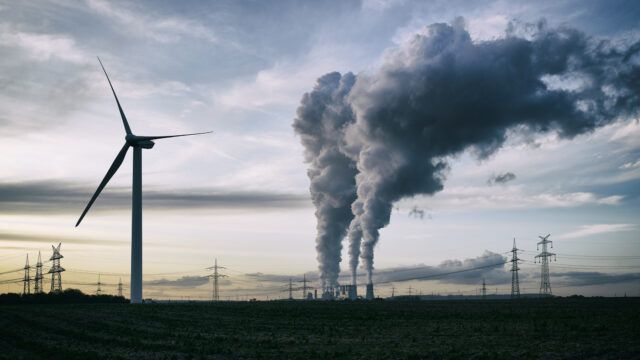The region has a collective AUM of $18.6bn in climate-aware funds, representing 10.5% of total assets globally, but the bulk sits in China.
The country, whose leader Xi Jinping reaffirmed at last week’s Earth Summit that he expects China’s carbon emissions to peak before 2030 and achieve net-zero emissions by 2060, accounts for 87% of assets in the five sub-categories of Apac climate-related funds designated by Morningstar.
The 10 largest climate-aware funds outside of Europe and the US are domiciled in China. Seven of these are clean energy/technology funds, and of the 20 largest funds, 18 are domiciled in China.
“President Xi Jinping has taken a proactive stance, pouring investment into renewable energy to meet this lofty goal. The move away from coal due to both climate change and air-quality concerns has been slower than ideal, with the lure of cheap, reliable coal-powered energy seemingly still too strong,” said Elizabeth Stuart, Morningstar’s EMEA sustainability research head and co-author of the report.
In addition, the largest 11 funds in terms of flows last year are all domiciled in China, and nine of these are clean energy/technology funds.
The three funds with the biggest flows were the ABC-CA New Energy Theme Mix, the ChinaAMC Energy Innovation Equity, and the Orient Secs Green Energy Car fund. Smart cars and green vehicles are a common theme in China with eight funds focused on the theme including the ICBCCS Green Energy Car Theme Allocation Fund that invests in companies benefiting from the theme of new energy vehicles, according to Stuart.
Yet, a recent survey by HSBC Asset Management found that 57% of mainland China investors with at least $250,000 of investable assets complained about a lack of sustainable investment products, and only 28% thought their advisors had sufficient understanding about ESG issues.
As of December 2020, there were 400 climate-aware funds worldwide that fit Morningstar’s definition, with collective AUM of $177bn; global assets have almost tripled in one year.
Morningstar defines climate-aware funds as those that have a branded, climate-related mandate. The funds span all key asset classes, including equity, fixed income, allocation, and alternatives.
Diverse climate products
Funds were identified based on name only, and are sub-divided into five mutually exclusive groups based on investment objective and policy, diversification, and sector exposure.
The sub-sectors (and their focus) include: low carbon (climate risks), climate conscious (transition), climate solutions (alpha generation), green bond (low risk but uncertain components), and clean energy/technology (alpha generation).
However, many clean energy/technology and carbon solutions funds carry some of the highest carbon risk. Alongside companies that focus on providing green solutions, these funds also invest in transitioning companies that operate in carbon-intensive sectors such as utilities, energy, and industrials and that are developing solutions to help reduce their own carbon emissions and that of others, according to Morningstar.
“When choosing a climate product, investors should carefully consider their green preferences and carbon risk appetite. They should understand the funds’ investment objectives and how the portfolios are constructed, ensure they are comfortable with the level of carbon exposure, and, crucially, look at the funds’ holdings to avoid any bad surprises,” said Stuart.
“Investors should also bear in mind that some climate change investment strategies can result in narrow and concentrated portfolios, which makes them more suitable as satellite holdings than as core parts of a portfolio. Climate-aware funds also have a relatively short history, with most launched in the past two to three years, making their performance hard to assess,” she said.
Largest Climate-Aware Funds, ex-Europe and US

















